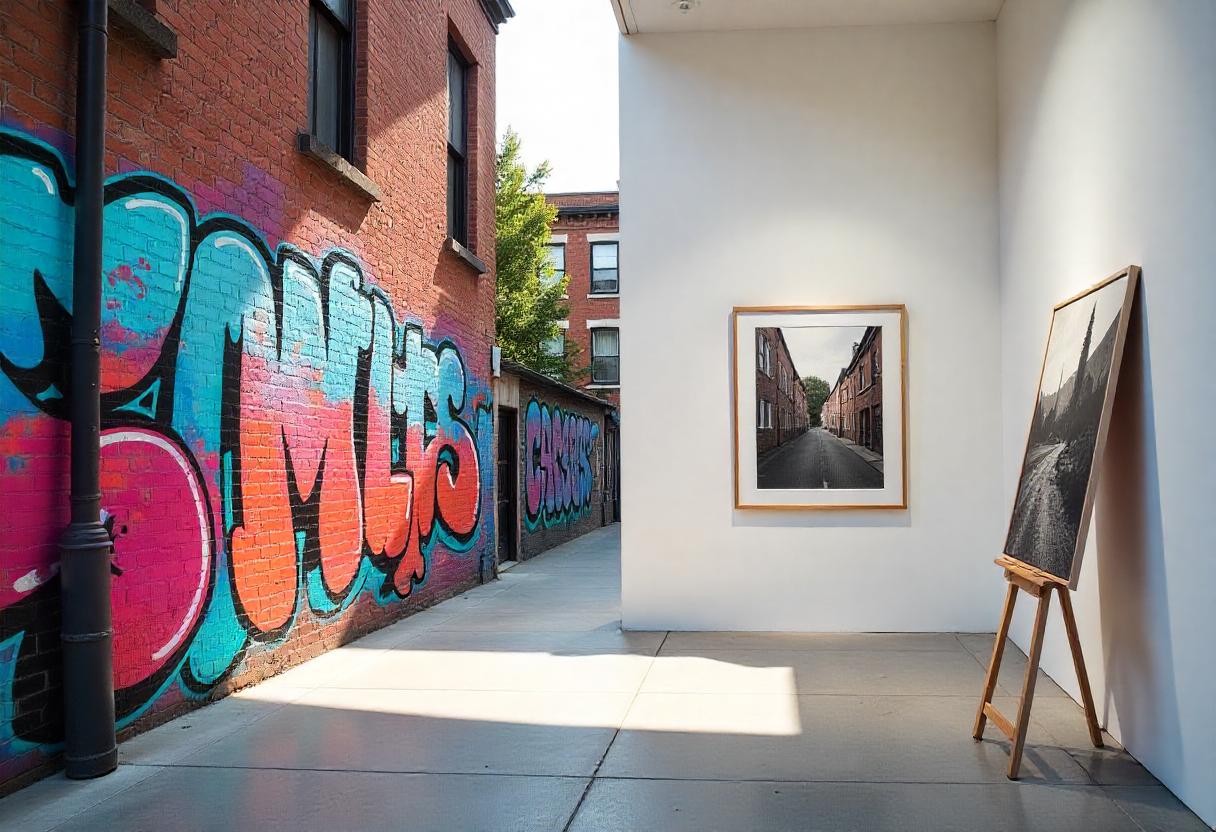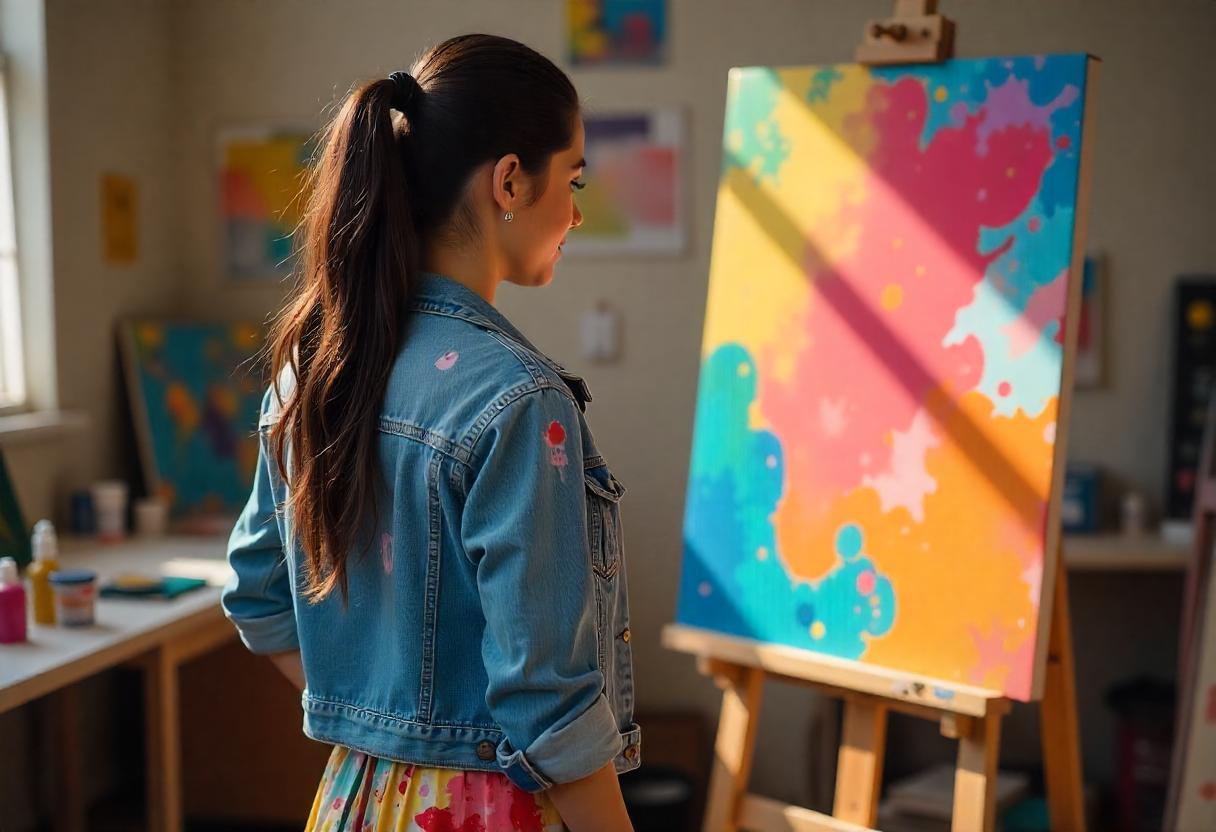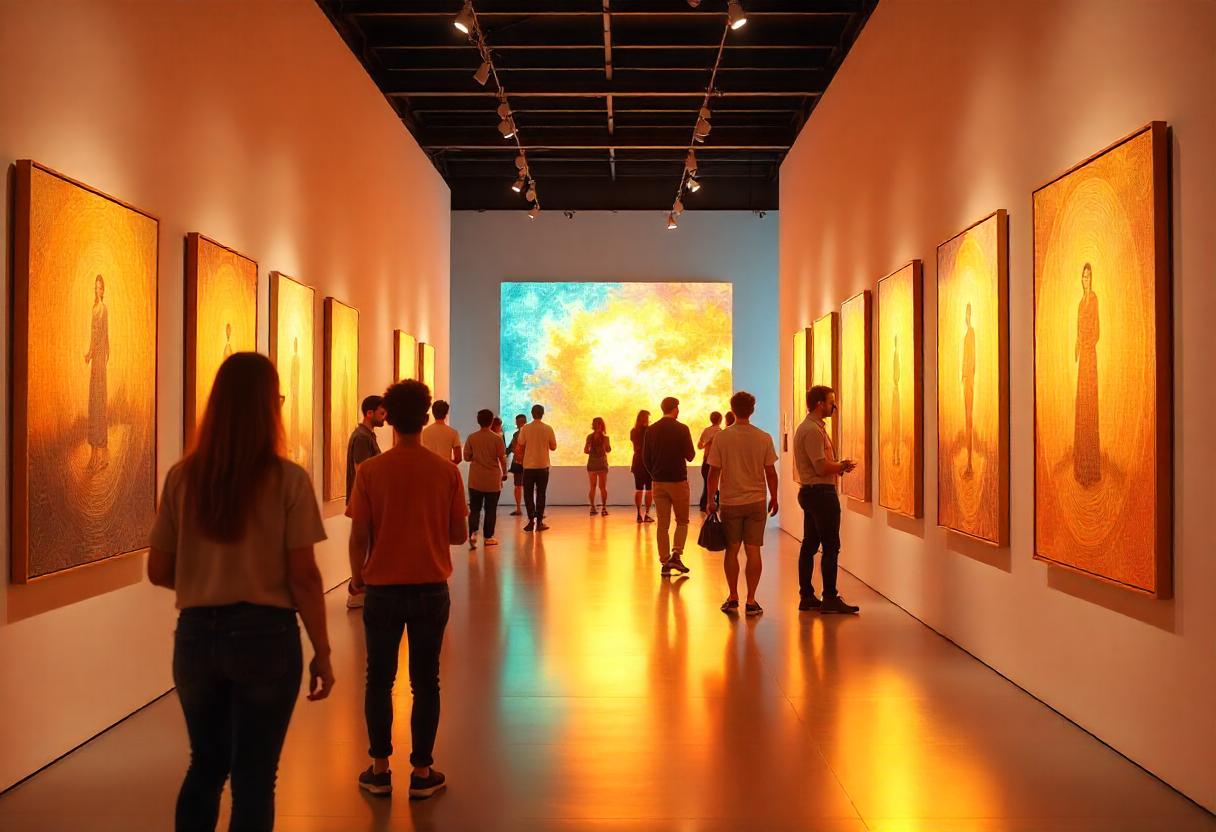Street Art vs. Fine Art: Where Do We Draw the Line?
An Instagram post of a graffiti time-lapse gains a million views in a night while a gallery exhibition takes months of careful curation and, in the end, gets a few hundred people.
So, what is the actual difference between street art and fine art?
Street art is raw, public, and social, seen in murals, stencils, or graffiti on urban walls, while Fine art is formal, academic, and usually showcased in exclusive spaces such as galleries or museums. Previously considered polar opposites, the two forms of art are increasingly blurring into each other, opening up new possibilities for young artists, as street art is now being displayed in galleries, and fine art is spilling out onto public walls.
But what does this mean for aspiring artists? Continue reading to explore how this shift affects your creative choices, career options, and how studying both can help you build a future-ready artistic identity.
What Counts as ‘Art’ Today?
Do you want free career counseling?
Ignite Your Ambitions- Seize the Opportunity for a Free Career Counseling Session.
- 30+ Years in Education
- 250+ Faculties
- 30K+ Alumni Network
- 10th in World Ranking
- 1000+ Celebrity
- 120+ Countries Students Enrolled
Art does not only belong to museums anymore, but is surfacing in our daily lives, often spotted in alleyways, on social media, or even on the sneakers you wear. So yes, that graffiti you clicked a photo of might just be the next museum piece!
Read Also: What Can You Do with a BFA? 15 High-Paying Creative Careers
To understand how street art and fine art differ, and where they overlap, let us break it down for you.
Book Now →
Street Art
- Made in public places like walls, trains, flyovers, and subways.
- Originated in cities like New York during the 1960s–80s.
- Originally used for expressing powerful messages involving politics, identity, and social change.
- Techniques often include spray paint, stencils, wheat-paste posters, stickers, and even yarn bombing.
- It is raw, bold, and doesn’t always seek permission.
Fine Art
- Generally created in studios or schools, displayed in galleries and museums.
- Classic examples include paintings, sculptures, photography, and mixed media.
- Often feels more ‘academic’ or ‘classic’, linked to tradition and culture.
- Valued for its history, beauty, and the artist’s technique.
- It is the kind of art that’s taught formally through a fine arts course or BFA degree.
Street Art vs. Fine Art: What Sets Them Apart (and Where They Overlap)
The STRAAT Museum, one of the largest street art museums in the world, recorded nearly 200,000 visitors in 2023, proving that public art is not only for the street walls. Street art is now entering galleries, getting international recognition, and yes, also, being taught in classrooms.
Here is a quick look at the major differences between Street art and Fine art, and how they often overlap in the creative world.
| Feature | Street Art | Fine Art |
| Where is it made? | On walls, streets, and public spaces | In studios, galleries, and exhibitions |
| Who is it made for? | Everyone passing by; no ticket needed | Curated audience: collectors, critics, institutions |
| Style & Tools used | Spray paint, stencils, stickers, paste, chalk | Oil paints, brushes, canvas, clay, charcoal |
| Purpose | Bold messages, activism, and personal expression | Aesthetic value, technical mastery, and tradition |
| Training style | Self-taught or community-learned | Formal education, like a BFA course or diploma |
| Legality | Sometimes done without permission | Legally protected, sold, exhibited |
| Recognition | Social media, festivals, public buzz | Museums, auctions, and academic acclaim |
| Career Pathways | Muralist, urban artist, designer, social media artist | Gallery artist, illustrator, curator, fine arts teacher |
Overlapping Point
- Many fine arts schools now include street art techniques in their programs
- Artists trained in fine arts are collaborating with brands to paint murals or design installations.
- Street art is being displayed in formal exhibitions; hence, artists are creating art for both galleries and public spaces
Read Also: Top 8 Career Opportunities in 2025 for Every Fine Arts Aspirant
Do you want free career counseling?
Ignite Your Ambitions- Seize the Opportunity for a Free Career Counseling Session.Why Learning Both Styles Gives You a Creative Edge
Knowing and understanding fine art and street art can help you extract the best of both worlds, helping you grow faster and stand out as an artist.
1. More Creative Control
You can leverage diverse media.
2. Stronger Portfolios
Fine arts colleges often ask for a portfolio. Including street-style work (like murals or digital graffiti) shows range, while also helping you secure employment offers.
3. Real-World Application
Street art teaches you to think fast, adapt to space, and work publicly, whereas fine art builds discipline, technique, and storytelling, which contributes to your overall growth.
4. Industry Exposure
Many fine arts courses now connect students with galleries, art festivals, or brand collabs, as hybrid artists are in demand.
5. Better Career Flexibility
You can explore roles like:
- Urban/public artist
- Gallery-exhibiting fine artist
- Illustrator or branding designer
- Art educator or muralist
- Mixed media or concept artist
Read Also: From BFA to Entrepreneurship: Starting Your Own Art Business
Who Should Consider a Fine Arts Course or BFA Degree?
If you are wondering how people make a career out of art, then you should know that not every artist starts with a fancy studio or formal gallery show. But every artist deserves a chance to grow, learn, and be taken seriously, and this is how a structured fine arts course or BFA degree can guide you.
A Fine Arts Course Might Be Perfect For You If…
- You are in Class 12 (or just graduated) and love creating art.
- You want to build real skills to amplify your creative vision and capabilities
- You are thinking of pursuing a career in design, illustration, or visual communication.
- You want to meet mentors, join exhibitions, and grow your network.
In short, studying at the right fine arts school can give you the structure, guidance, and confidence you need to turn your talent into a future-ready profession.
How to Start: 5 Steps of Joining a Fine Arts Program
Step 1: Choose Your Path
Decide between a diploma, a certificate course, or a Bachelor of Fine Arts (BFA), based on your time, interest, and goals.
Read Also: The Evolution of Fine Arts: How AI is Transforming Traditional and Applied Art
Step 2: Check Eligibility
Some BFA degrees may require a basic entrance test or portfolio.
Step 3: Prepare Your Portfolio
Include sketches, digital work, paintings, or street-art samples that can showcase your capabilities and potential.
Step 4: Shortlist Fine Arts Colleges
Check for colleges that offer practical training, exhibitions, visiting faculty, and facilities for both fine art and street art techniques. (Look for programs that combine creativity with career training, like branding, design thinking, or public art modules.)
Step 5: Apply and Attend Counselling
Submit applications, attend portfolio reviews, and explore scholarships or campus options.
Final Thoughts
No matter the space, be it gallery walls or street corners, art, at its core, is defined by you, your vision, and creativity. The most exciting artists today aren’t choosing between street and fine art, but instead they are blending both to tell powerful stories, build careers, and transform how we experience creativity.
If you are someone who wants to express, explore, and evolve through your art, choosing the right learning space makes all the difference.
Read Also: Fine Arts in the Digital Era: Evolution or Revolution?
At AAFT School of Fine Arts, we train and guide you to make your art seen, felt, and remembered. As per your vision, AAFT provides the space, guidance, and exposure to turn it into reality.
FAQs
Is street art considered real art in fine arts colleges?
Yes, it is a legitimate art form.
Can I join a fine arts course after 12th without an art background?
Yes, you can enroll in a short-term course.
What career options do I have after a fine arts course?
You can work as a:
1. Muralist or street artist
2. Gallery artist or illustrator
3. Animator or visual designer
4. Curator, art teacher, or creative director
How do I choose the right fine arts school in India?
Look for a school that offers:
1. A comprehensive curriculum
2. Facilities like studios, galleries, workshops, and industry exposure
3. Industry-connected faculty and placement assistance
4. Scope to explore both traditional and contemporary forms, including street art

AAFT has been providing the world with limitless creativity and expression since 1993! Through a dynamic and industry-driven curriculum, AAFT provides engaging and captivating articles to persuasive blogs and empowers its readers to explore diverse avenues of creative media education-related content.






